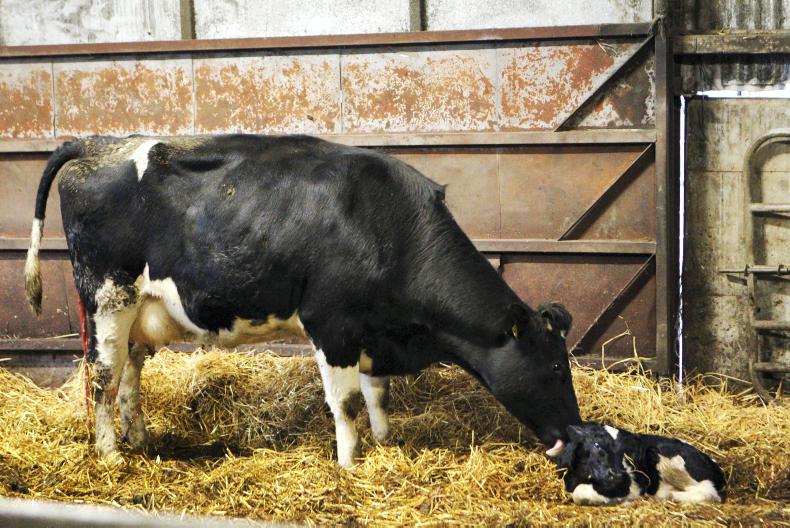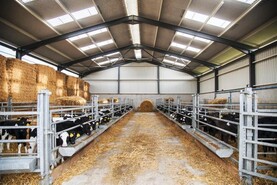An expanding Irish dairy industry is feeling the heat of growing criticism from a number of fronts, including the environmental lobby.
Over the past week, the blame game has started about why we have another fodder crisis so quickly after spring 2013, when the last importation of fodder arrived on these shores.
The expanding dairy industry in the east has wrongly come in for plenty of well-intended but inaccurate criticism.
The fodder crisis started in suckler country in the northwest when an early autumn forced cows indoors. Early winter weather followed by a late spring forced farmers to bring stock in off the land early, and poor grazing conditions and below normal March growth have prevented a return to the fields.
Yes, a small number of dairy farmers had low reserves of feed for stock numbers as growing businesses are cash hungry. Underperforming land blocks for the stock they need to feed over winter is also a key element.
So are dairy farmers really to blame? Quotas had not been removed when we had the last fodder crisis. So it’s not only the extra 300,000 odd dairy cows and followers that are to blame.
The second key point is the national stocking rate on dairy farms is only about 2 cows/ha, so equating the Irish scenario to other European countries where environmental limits have reduced cow numbers is inaccurate.
Take our nearest major dairy neighbour, the Netherlands. The Dutch have about 1.9m utilisable hectares on which they hold more than 1.7m dairy cows. Ireland has around 4.6m hectares and on that there are 1.3m dairy cows.
If we take a total livestock barometer, one of the more recent published scientific publications put the ratio at 3.5 livestock units (LU) per hectare in the Netherlands compared with 1.5LU/ha in Ireland.
The big movement in recent years in Ireland has been the development of measurement in grassland. The results tell us the average Irish farm is growing about 7t/ha to 8t/ha of dry matter. Some farms in Ireland are growing in excess of 15t/ha, but maybe a more reasonable suggestion is that, on average, well managed farms should be able to grow 12t/ha to 13t/ha.
It’s important to remember the big driver of grass growth is soil fertility and this has slipped in recent years because of low incomes and prices.
Now over 65% of Irish soils are in Index 1 and 2 (poor fertility). The experts say we are only using 35,000t of phosphorus and 90,000t of potassium, which is not even half that required to maintain soil fertility.
Ireland still hasn’t reached the cow numbers we had in 1975, despite the 300,000 increase in milking cows over the last three years. Maybe we never will – efficiency before scale has always been the best advice and it remains so today.
Read more
Fodder crisis: moral support and meitheal spirit will keep farmers fighting
Put 1t silage/cow in reserve – Teagasc
An expanding Irish dairy industry is feeling the heat of growing criticism from a number of fronts, including the environmental lobby.
Over the past week, the blame game has started about why we have another fodder crisis so quickly after spring 2013, when the last importation of fodder arrived on these shores.
The expanding dairy industry in the east has wrongly come in for plenty of well-intended but inaccurate criticism.
The fodder crisis started in suckler country in the northwest when an early autumn forced cows indoors. Early winter weather followed by a late spring forced farmers to bring stock in off the land early, and poor grazing conditions and below normal March growth have prevented a return to the fields.
Yes, a small number of dairy farmers had low reserves of feed for stock numbers as growing businesses are cash hungry. Underperforming land blocks for the stock they need to feed over winter is also a key element.
So are dairy farmers really to blame? Quotas had not been removed when we had the last fodder crisis. So it’s not only the extra 300,000 odd dairy cows and followers that are to blame.
The second key point is the national stocking rate on dairy farms is only about 2 cows/ha, so equating the Irish scenario to other European countries where environmental limits have reduced cow numbers is inaccurate.
Take our nearest major dairy neighbour, the Netherlands. The Dutch have about 1.9m utilisable hectares on which they hold more than 1.7m dairy cows. Ireland has around 4.6m hectares and on that there are 1.3m dairy cows.
If we take a total livestock barometer, one of the more recent published scientific publications put the ratio at 3.5 livestock units (LU) per hectare in the Netherlands compared with 1.5LU/ha in Ireland.
The big movement in recent years in Ireland has been the development of measurement in grassland. The results tell us the average Irish farm is growing about 7t/ha to 8t/ha of dry matter. Some farms in Ireland are growing in excess of 15t/ha, but maybe a more reasonable suggestion is that, on average, well managed farms should be able to grow 12t/ha to 13t/ha.
It’s important to remember the big driver of grass growth is soil fertility and this has slipped in recent years because of low incomes and prices.
Now over 65% of Irish soils are in Index 1 and 2 (poor fertility). The experts say we are only using 35,000t of phosphorus and 90,000t of potassium, which is not even half that required to maintain soil fertility.
Ireland still hasn’t reached the cow numbers we had in 1975, despite the 300,000 increase in milking cows over the last three years. Maybe we never will – efficiency before scale has always been the best advice and it remains so today.
Read more
Fodder crisis: moral support and meitheal spirit will keep farmers fighting
Put 1t silage/cow in reserve – Teagasc






 This is a subscriber-only article
This is a subscriber-only article










SHARING OPTIONS: